Would you like to know if you can eat onions right out of the garden after picking them? Well, we have researched this topic and have answers for you. It's vital to understand if you can eat onions right out of the garden after picking them to know whether you will get sick if you don't rinse them.
You can eat onions right out of the garden after picking them if you peel off the outer layers. Non-bulb onions, like green onions, will need to be rinsed before eating.
In this article, we will learn if you can eat onions right out of the garden after picking them. We will also learn the answers to other interesting related questions, such as can you eat the green tops of onions, and how do you prepare onions for storage? Keep reading to learn more.
Can You Eat Onions Right Out Of The Garden After Picking?
Most onions can be eaten right out of the garden after picking, but some need to be rinsed. Let's learn which onions can be eaten right out of the garden and which must be rinsed first.
Red Onions
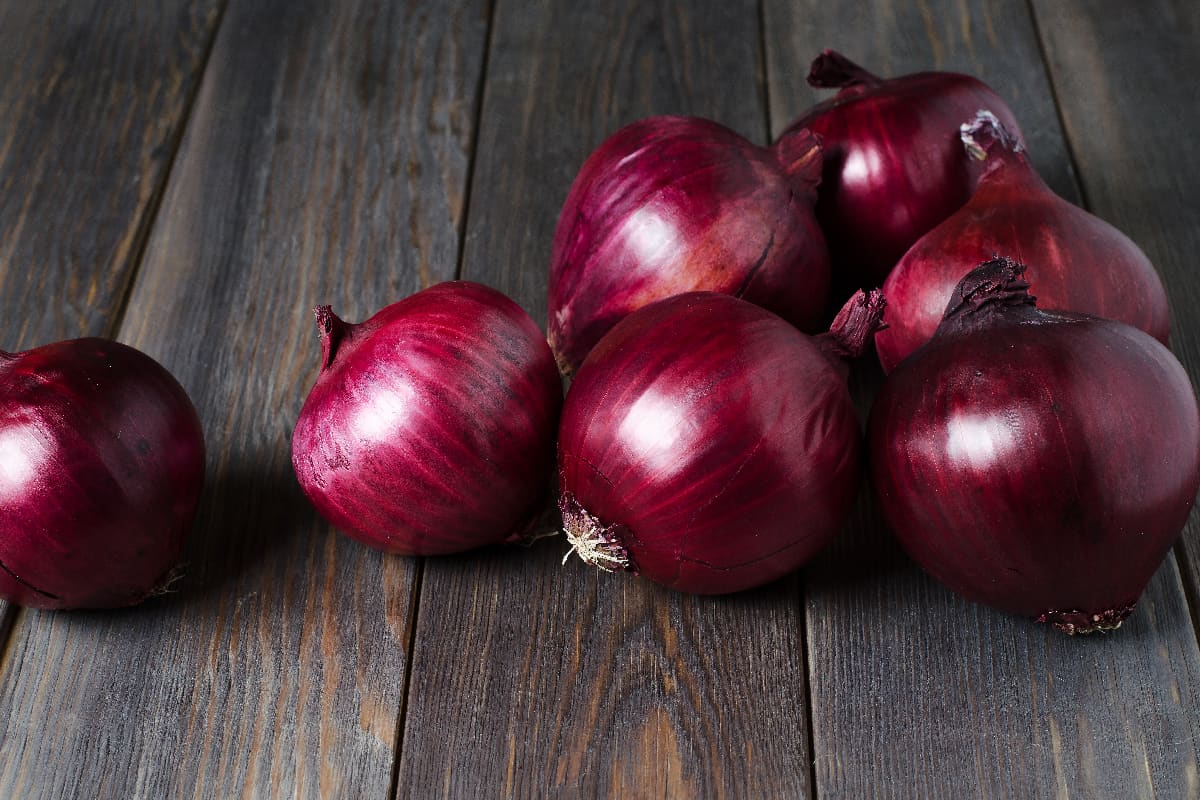
Red onions can be eaten right out of the garden. Peel the outer layer of skin off the onion, and it's good to eat. Removing the outer layer of the onion helps ensure there isn't any dirt.
White Onions
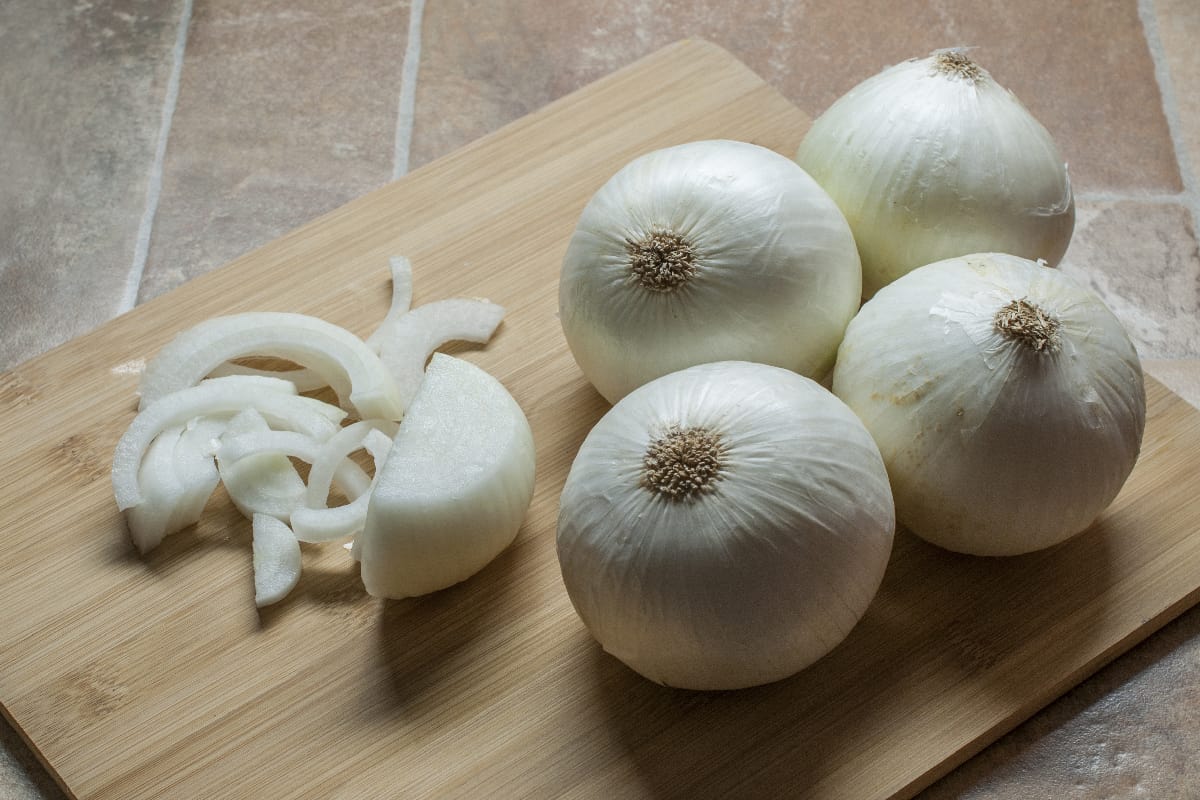
White onions can also be eaten right out of the garden. Like the red onions, peel off the outer layers to remove any dirt.
Yellow Onions
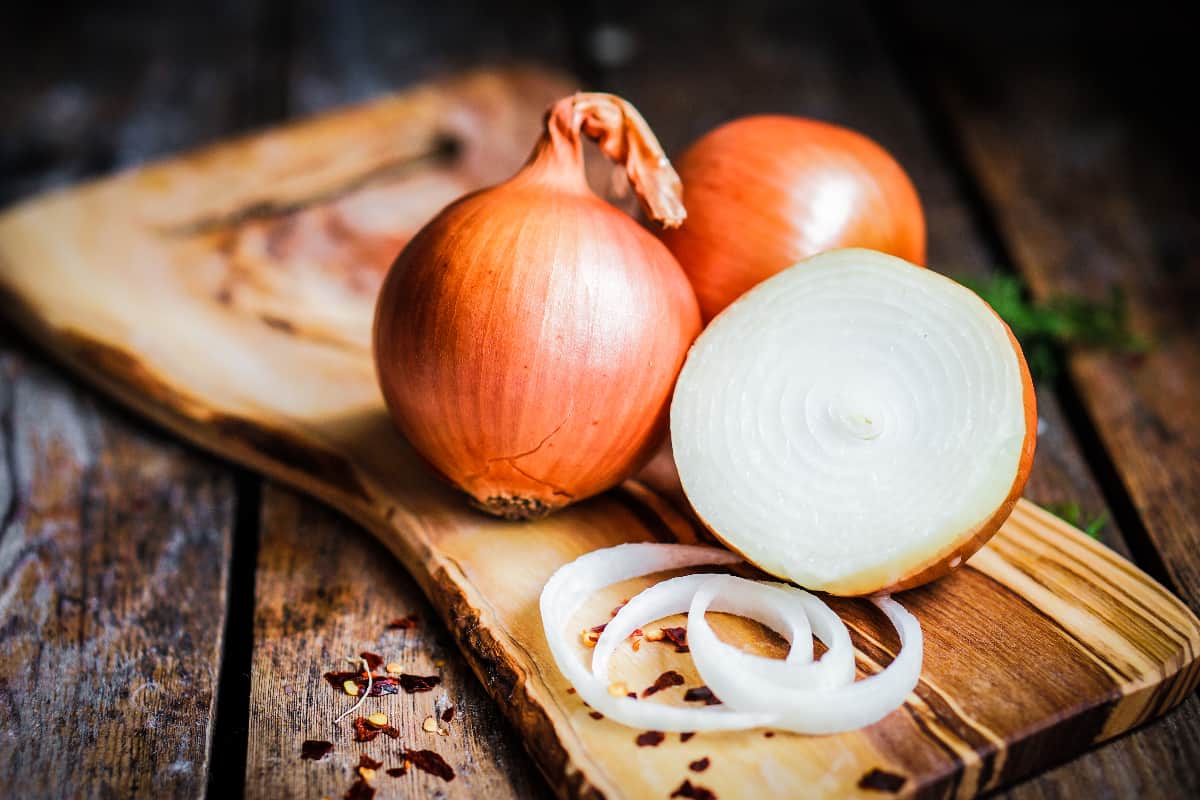
Yellow onions also form large bulbs that can be eaten right out of the garden. It's important, like with the other onions, to peel off the outer layers.
As long as you peel enough layers away from the top of these onions to ensure there isn't any dirt, they are safe to eat right out of the garden.
Sometimes, freshly harvested red, white, or yellow onions will have next to no dry layers on the outside. When there aren't any dry layers, you can eat the whole onion without peeling it, but if you don't peel it, be sure to rinse it with water.
It's the removal of the outer layers that removes dirt. The reason it's vital to remove dirt is that many harmful diseases can be found in ordinary garden soil, such as E. coli and listeria.
Green Onions
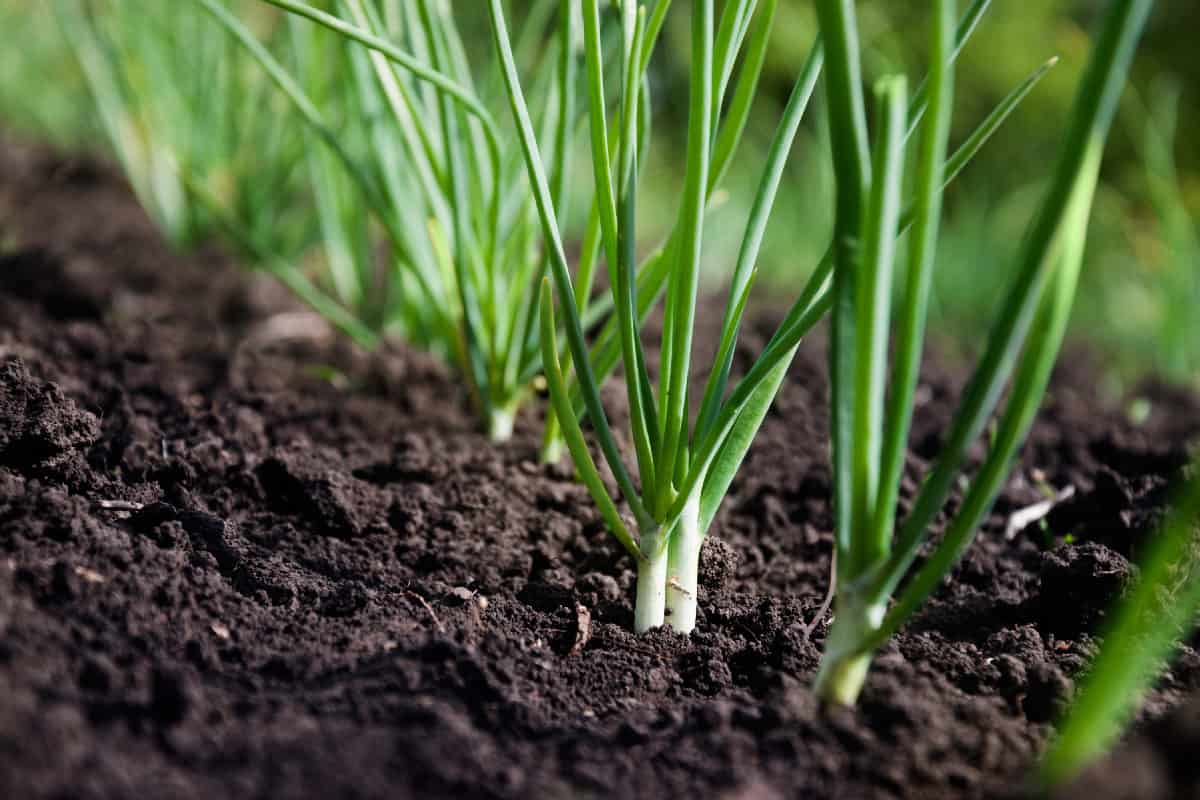
Green onions differ from other onions because they don't grow large bulbs. These onions don't grow large bulbs because they are allium fistulosum and the other onions are allium cepa.
Allium fistulosum, also known as a green onion or welsh onion, is a type of onion that was cultivated to grow small bulbs. The leaves of this plant are the central part eaten, but since they can't be fully peeled to remove dirt, they need to be rinsed.
Can You Eat The Green Tops Of Onions?
The green tops of red, yellow, and white onions, also known as allium cepa, can be eaten but are tough and undesirable. Eating the green tops of onions is best to do so when the onions are young.
When the onions are around eight weeks old, their tops will be tender and sweet. Onions of the family allium cepa harvested young are also called spring onions.
With green onions, it is the green top that you eat. These onions are called allium fistulosum. Several members of the onion family have desirable green tops.
With chives, the green leafy part of the plant is consumed, and with garlic, it is the bulb that is eaten but not the leaves. These two plants are part of the onion family and are named allium schoenoprasum and allium sativum, respectively.
Conclusion
You can eat the tops of onions, but the tops of bulb onions are best consumed young. Also, all onion family members have edible green tops, but some taste better than others.
How Do You Prepare Onions For Storage?
How you prepare onions for storage will depend on what kind of onion you're storing. Let's learn about the different ways to prepare onions for storage.
Red, White, And Yellow Onions
When storing red, white, or yellow onions, it's best to dry them for two to three weeks. This drying process will protect the onions from bacteria during the winter.
When drying the onions, lay them on a table in a one-high layer. It's best not to stack the onions to ensure good airflow, allowing them to cure faster and prevent mold from growing.
After two to three weeks, the onions' outer skins will be dry. When the onions reach this state, they are finished curing. You can then store the onions in a box with holes for better airflow.
When storing a box of onions, keep it in a cool dark place. A garage or basement is a common storage place for boxes of onions.
Green Onions
Green onions are a little different from red, white, and yellow onions because they don't have bulbs to cure. The best way to prepare green onions for storage is to dehydrate them.
When green onions are dehydrated, they can be stored for years. To dehydrate green onions, place them into a dehydrator for three to five hours.
There are several ways you can prepare your green onions to be dehydrated. You can cut your green onions into small round cuts or inch-long sticks. You can also cut green onions into matchstick lengths when dehydrating.
If you want to try a dehydrator to prepare green onions for storage, here are two of the best available on Amazon.
Elite Gourmet Food Dehydrator
You can find this product here on Amazon.
Cosori Food Dehydrator
You can find this product here on Amazon.
Why Are My Onions Dying?
![Woman with hoe in the garden with green onions, Can You Eat Onions Right Out Of The Garden After Picking? [Inc. White And Red]](https://gardentabs.com/wp-content/uploads/2022/10/Why-Are-My-Onions-Dying-e1666822212350.jpg)
There are typically three main reasons your onions may be dying and a myriad of complications caused by these issues. Let's look at the main reasons your onions may be dying and how to identify and remedy them.
Overwatering
If you are overwatering your onions, one of the easiest signs to spot is the ground being saturated with water. You want to keep the soil moist, but it's not good to have so much water that the plants can't breathe.
If there is too much water in the soil, the onions' roots won't be able to get enough air, and the plant will suffocate. You will start to notice the leaves turning yellow.
The quickest solution for overwatering your onions is to let the ground dry for a few days. Once the soil is dry at least two inches deep, you can begin rewatering with shorter watering times and fewer watering days a week.
Something to look out for with overwatering onions is bacterial or fungal infections. When the plant turns sick and yellow, it is more susceptible to disease and can become infected.
Typically, if you see black spots on the leaves of your onions, it has a bacterial infection, and if you notice white spots, it has a fungal infection.
You should treat your onions for the type of infection it has, but since there are exceptions to the color spot rule, it's best to treat your onions for both bacterial and fungal infection.
Here are two of the best plant sprays on Amazon that treat bacterial and fungal infections.
Monterey Fungicide And Bactericide
You can find this product here on Amazon.
Garden Safe Fungicide 3
You can find this product here on Amazon.
Underwatering
If you are underwatering your onions, you will see that the ground around the onions is dry, and the leaves are wilted and stunted. If the onions can't get enough water, they will wilt and stop growing.
The solution for underwatering onions is to increase how long you water each day and how many days each week you water. It would be best to gradually increase watering times and check how the plants respond to avoid issues related to overwatering.
Overfertilizing
Identifying if your onions are suffering from overfertilization is easy because the plants will be affected a day or two after fertilizing.
The leaves of your onions will start to turn yellow and the edges of the leaves brown. When the onion plant absorbs too much fertilizer, it sends excess to the edges of its leaves, turning them brown.
If you have overfertilized your onions, you must flush the soil. Take a garden hose and soak the ground around the onions for two to three hours. The fertilizer in the soil will dissolve in the water and be flushed away.
Once you have thoroughly soaked the ground, allow it to dry for several days before watering. Once the soil has dried, you can resume regular watering. If the onions still exhibit signs of overfertilization, soak the ground again.
Final Thoughts
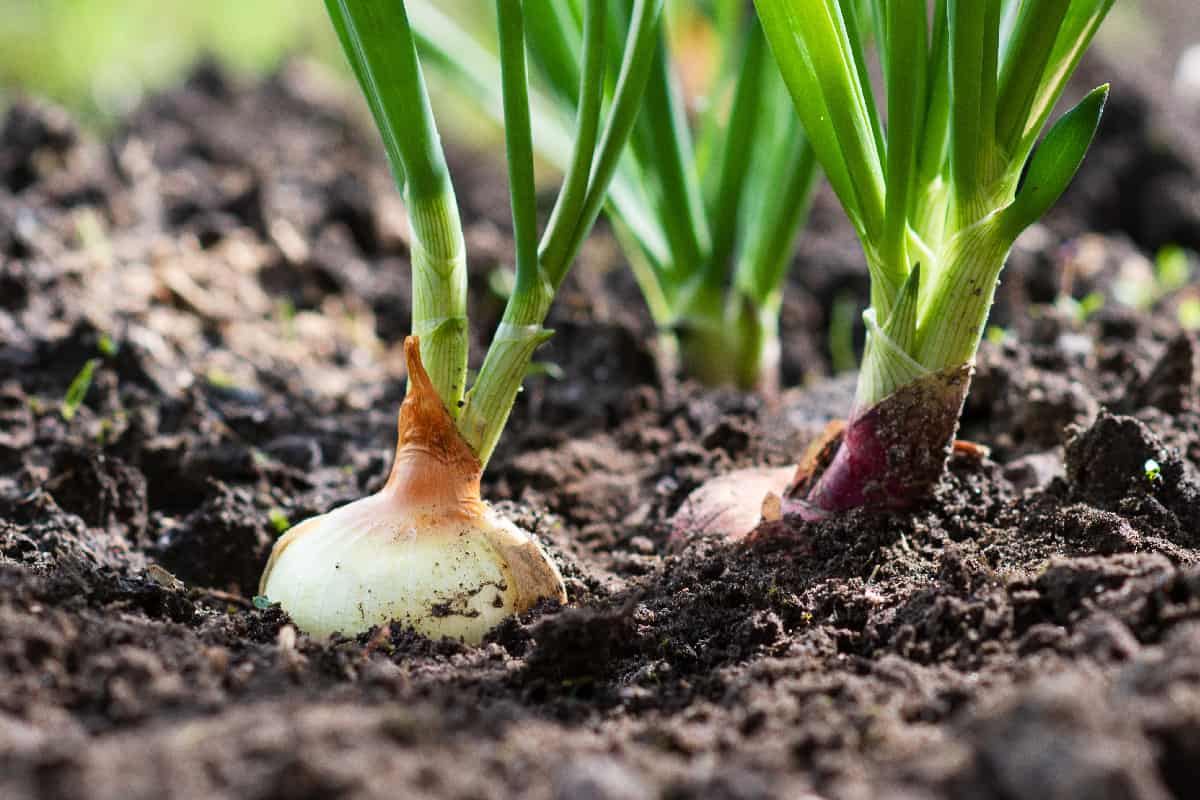
In this article, we learned that you can eat bulb onions right out of the garden if you peel their outer layers off. We also learned that you could eat the green tops of onions, but they are best when young.
Remember, dry bulb onions for two to three weeks to help them cure for better storage.
We hope you enjoyed this article. If you want to learn more, check out some of these other posts:
How To Grow Green Onions Indoors?
How To Replenish Soil After Tomatoes [Inc. Amending Soil Or What To Plant]




